The First Identification of a Fabric Mudguard Decorated with Flower Petals with Jewel Beetles at Tomb no. 44 in JJoksaem, Gyeongju
- Attention to the Hairstyle and Splendid Textiles of the Deceased Teenage Princess. Research Result Film Preview on July 4th at 11 am and 3pm. -
South Korean archaeologists has discovered a fabric mudguard decorated with flower petals with jewel beetles at a tomb in Gyeongju, the ancient capital of Silla Kingdom.
Researchers from the Gyeongju National Research Institute of Cultural Heritage (the GNRICH, Director Hwang In-ho) under the Cultural Heritage Administration has conducted detailed excavations, scientific research and analysis of a wooden chamber tomb with a stone and earth mound* in Silla ancient tomb no. 44 located in the Jjoksaem district of Gyeongju since 2014.


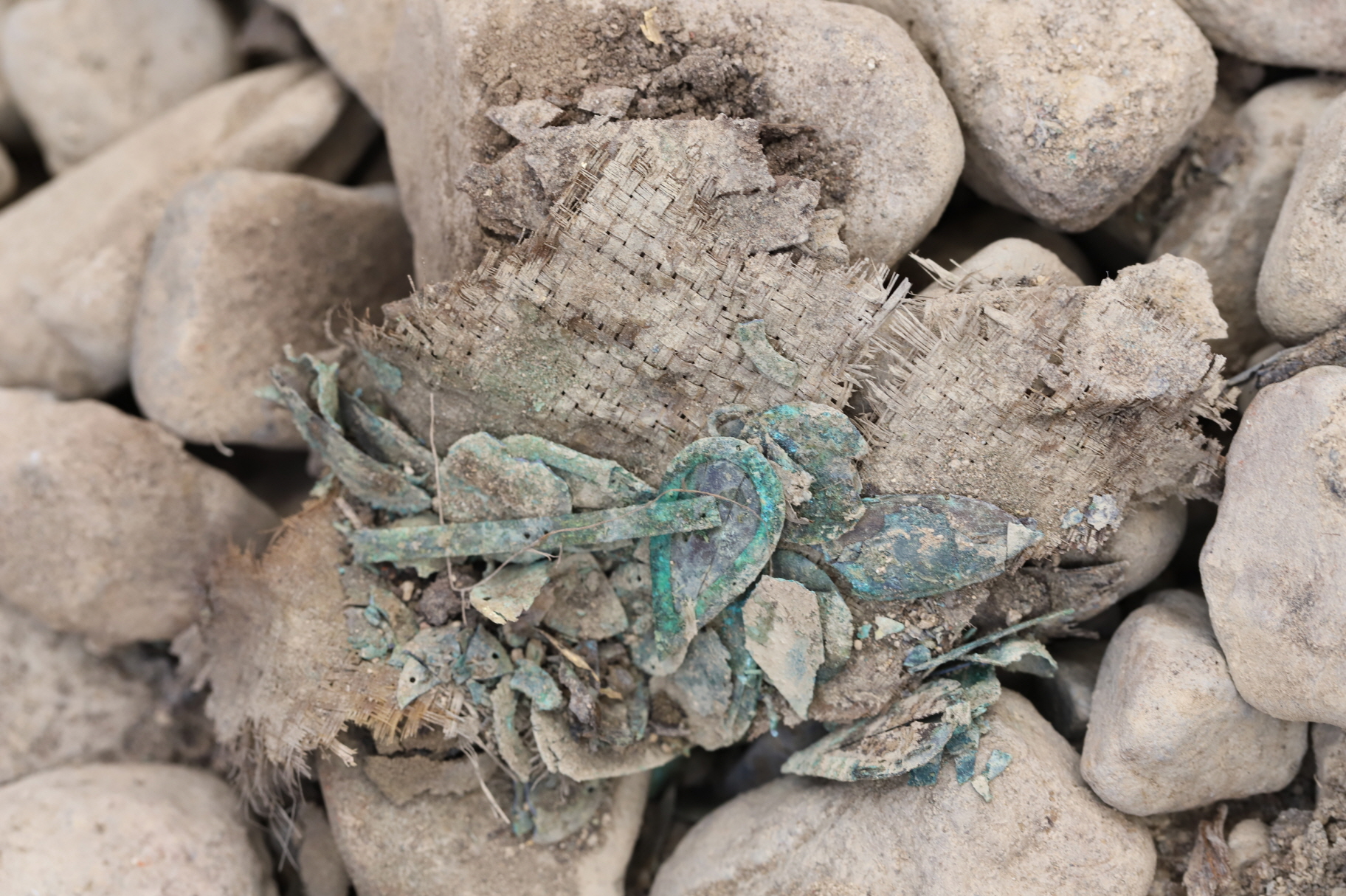
During this investigation, several significant artifacts were discovered, including a fabric mudguard decorated with flower petals with buprestidae*, the hairstyle of the buried individual, and fabrics used for gilt-bronze ornaments.
* Wooden chamber tomb with a stone and earth mound: It is a unique tomb of Silla called a stone-mounded wooden chamber (積石木槨墳), where stones are piled up around a wooden chamber and then a burial mound is created.
* Buprestidae: It is known as jewel beetles and belong to a family of beetles. The forewings of adult beetles have a glossy golden-green color, which made them ideal for various decorative purposes. These wing decorations have been discovered only in the tombs of the highest-ranked individuals among Silla tombs.
The entire structure and construction process of the stone-mounded wooden chamber in the tomb no. 44 at Jjoksaem were able to be restored through an intensive 1,350-day excavation.
Moreover, this investigation holds greater significance as new research results have been generated through collaborative research with various fields such as conservation science, fashion and textiles, civil engineering, and geology during this period.
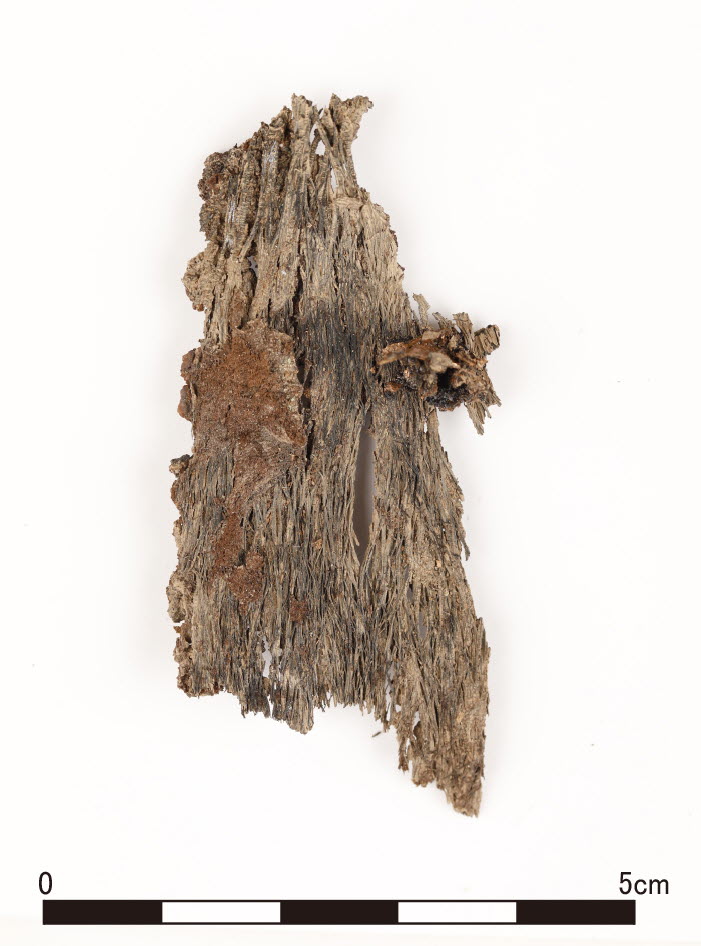
Initially, in 2020, hundreds of gilt-bronze ornaments decorated with jewel beetles were found in an area, where grave goods were left, near the head of the deceased. After an extensive period of analysis and research on these adornments, it was determined that they are part of the mudguard, a bamboo fabric (竹製) adorned with the wings of jewel beetles.
The mudguard consisted of a woven bamboo outer frame (approximately 80 x 50 cm) with its interior covered in hemp cloth and three layers of hemp cloth and silk fabrics on the exterior. Additionally, a fabric was added on top of them.
The fabric was adorned with gilt-bronze leaf-shaped (心葉型) decorations featuring the wings of jewel beetles. Gilt-bronze hanging accessories (瓔珞) and thin, flat gilt-bronze plates(帶) were arranged on the fabric.
The leaf-shaped ornaments were crafted by overlapping two wings of the jewel beetles on a gilt-bronze plate.
An additional gilt-bronze plate attached to the edges of the wings for decorative purposes, secured with threads (周緣帶). Four leaf-shaped ornaments were combined with a hanging accessory to create a flower pattern.
A total of 50 pieces of these flower patterns were individually attached to the mudguard.
These techniques exemplify the exceptional craftsmanship of Silla during that time and demonstrate the true value of their brilliant artistry.
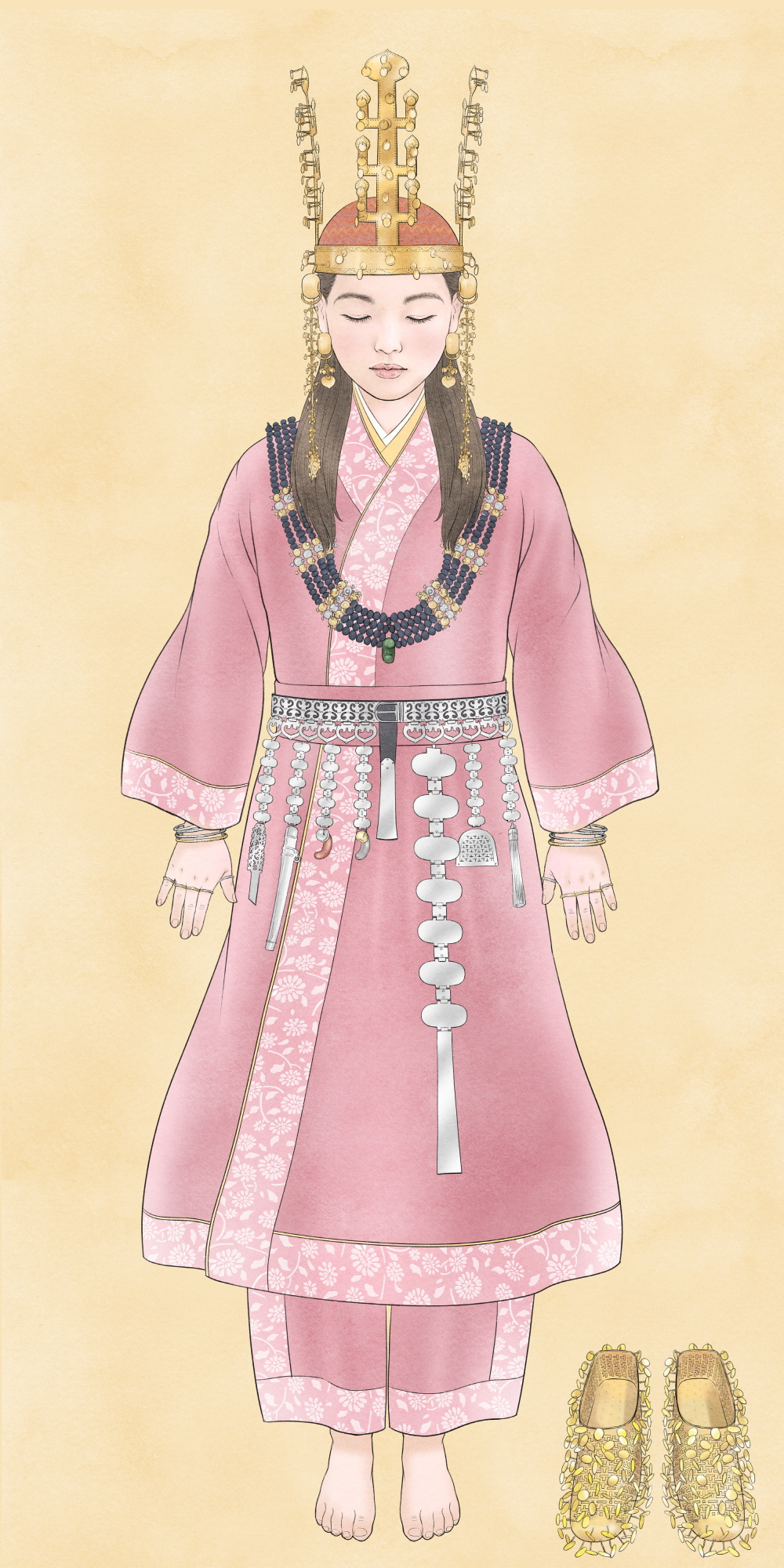
In 2020, a trace of fabric was discovered near a gilt-bronze crown.
The fabric was found to cover a 5cm-wide bundle of organic matter.
Upon analysis, it was determined that the bundle of organic matter was the individual’s hair.
The shape of the fabric wrapped around the hair indicated a hairstyle of the time, where several strands of hair were tied together.
Fabrics used for gilt-bronze products such as gilt-bronze crowns, gilt-bronze shoes, and horse ornaments were also identified.
The analysis revealed various fabrics inside the gilt-bronze crown, which were identified as hemp (麻織物) and silk (絹織物) fabrics.
A weaving technique called *Samsaik-Kyeonggeum was observed, and involves using three colors of thread to create patterns.
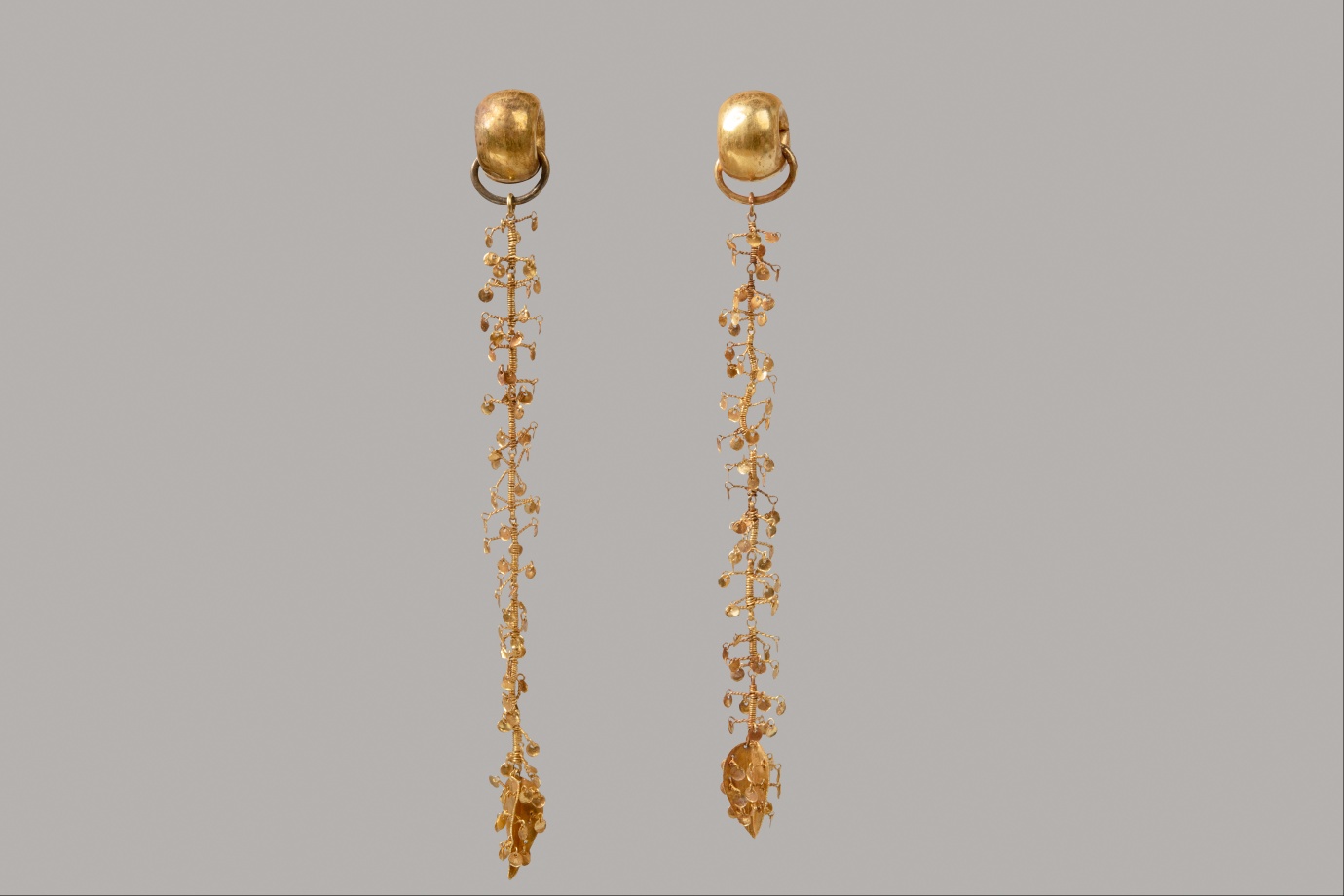
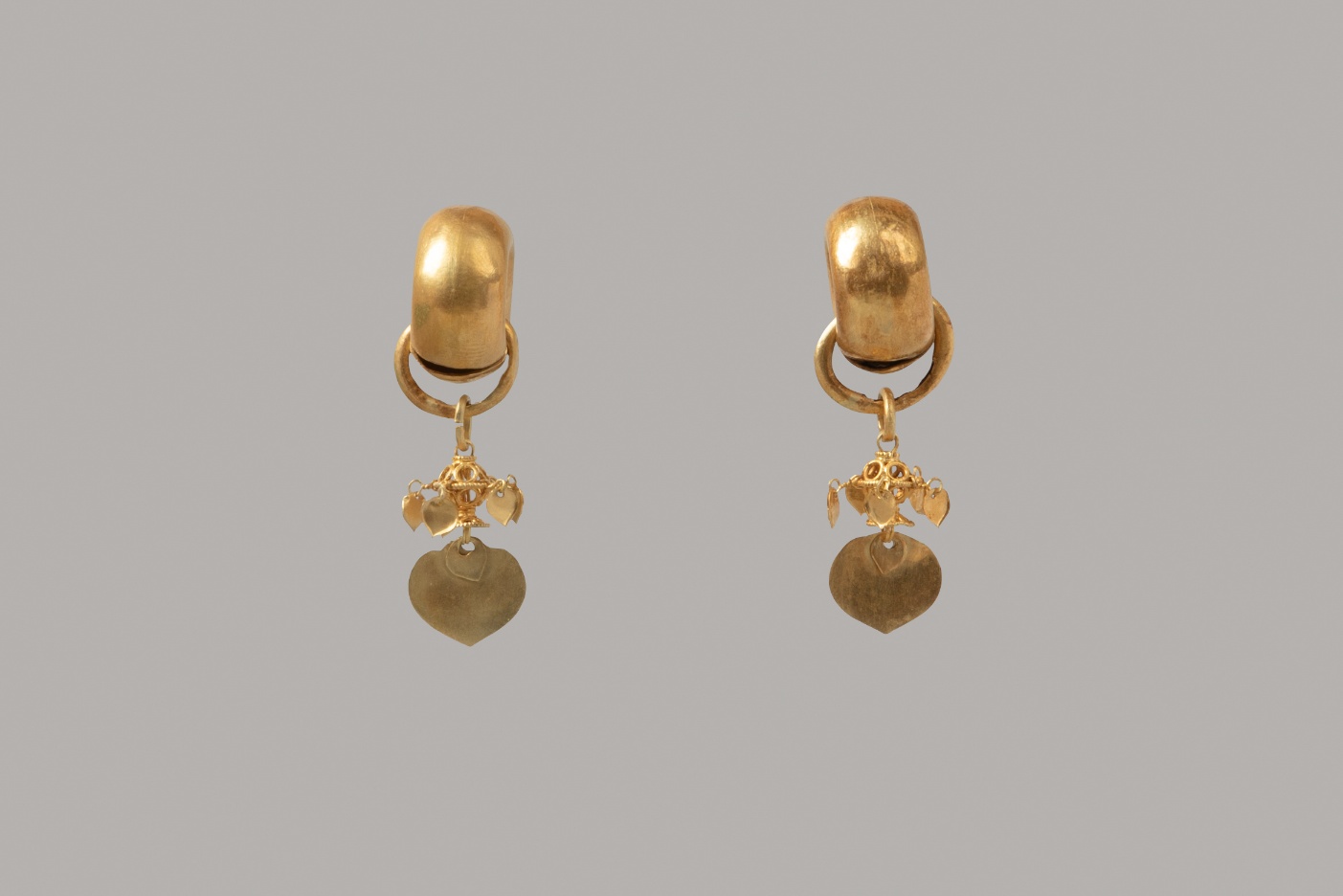
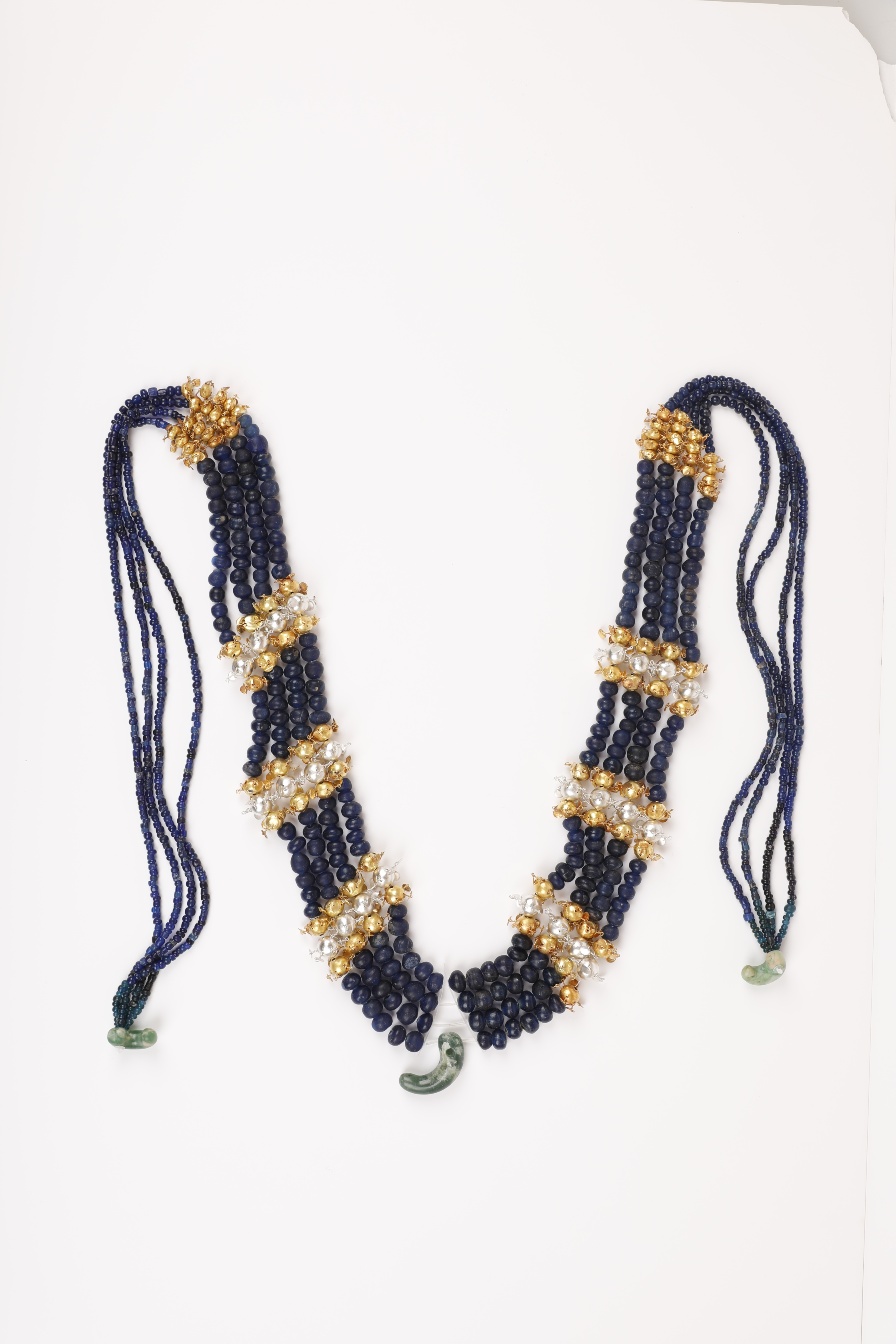
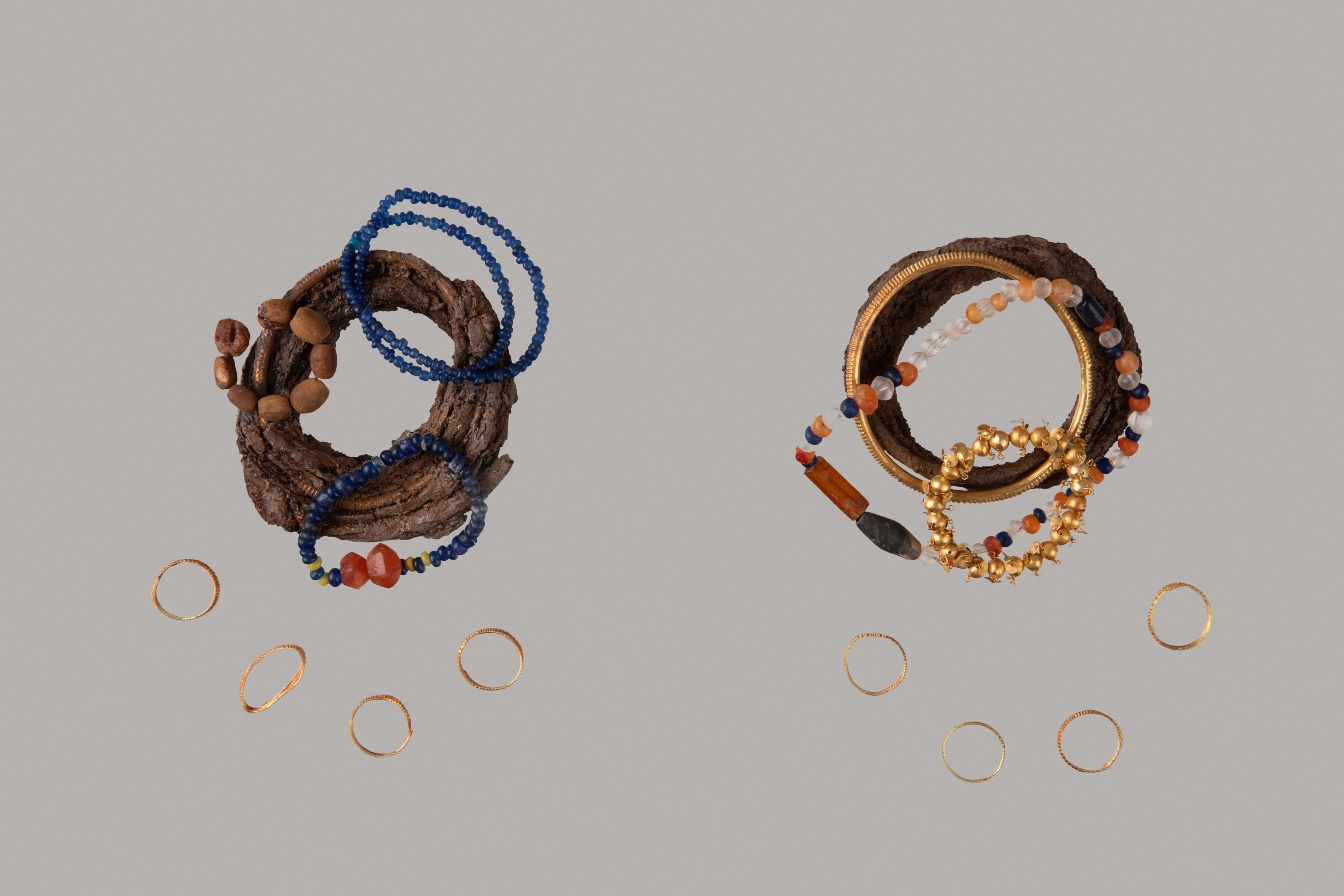
The colors included red (dyed from a madder plant), purple (dyed from the roots of purple gromwell, Lithospermun erythrorhizon), and yellow (unknown ingredient).
Furthermore, leather, silk, and wool fabric made of goat’s hair were discovered in the gilt-bronze shoes.
The colorful fabrics, visible through the openwork of the shoes, suggest that the gilt-bronze shoes must have been splendid in appearance.
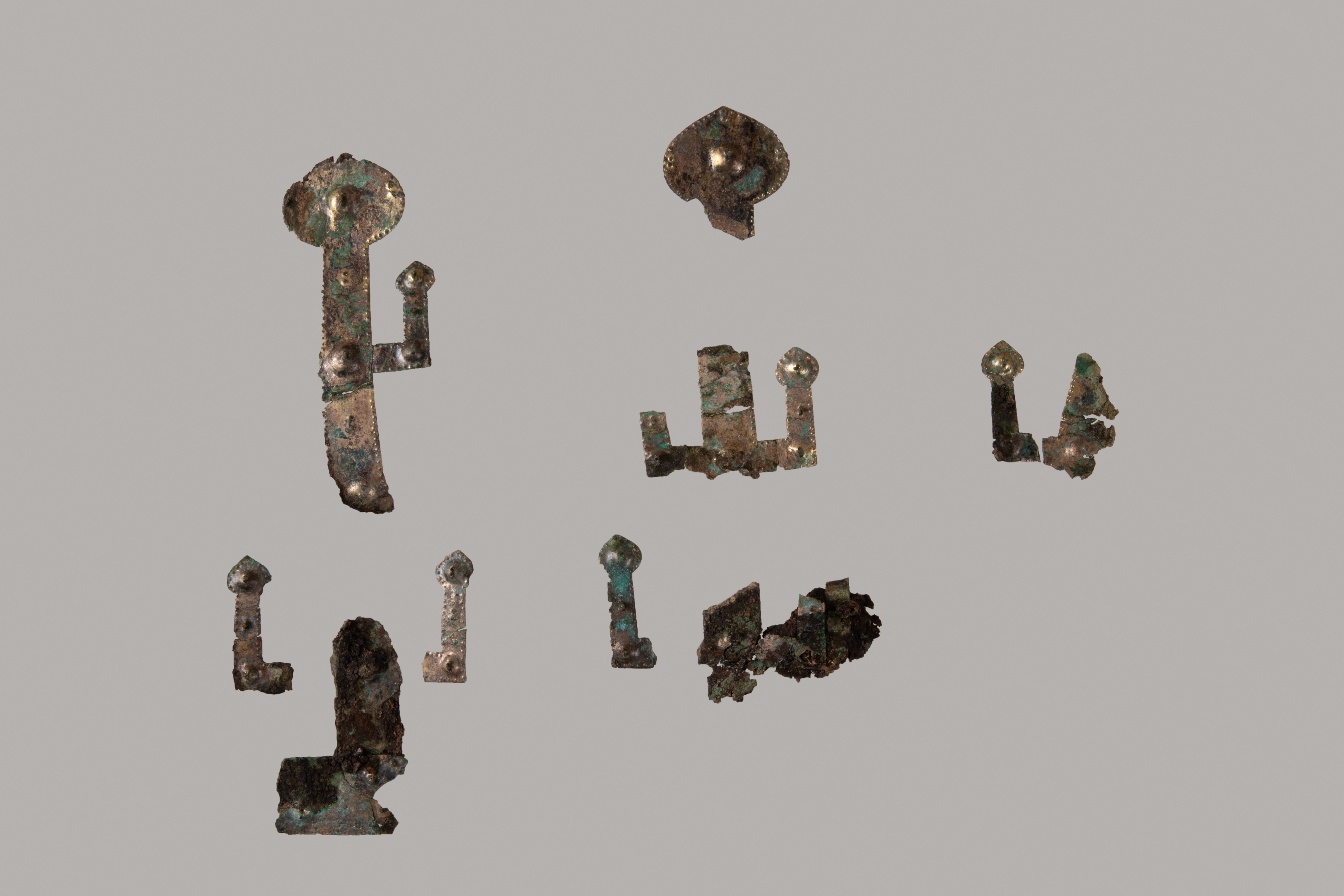
This discovery marks the first time a significant number of fabrics have been found as actual materials, and they are expected to serve as important data for future textile research.
* Samsaik-Kyeonggeum (三色經錦): This is a fabric that displays patterns using three colors of thread and requires skillful techniques and time to create. It is typically found only in the tombs of high-ranking individuals.
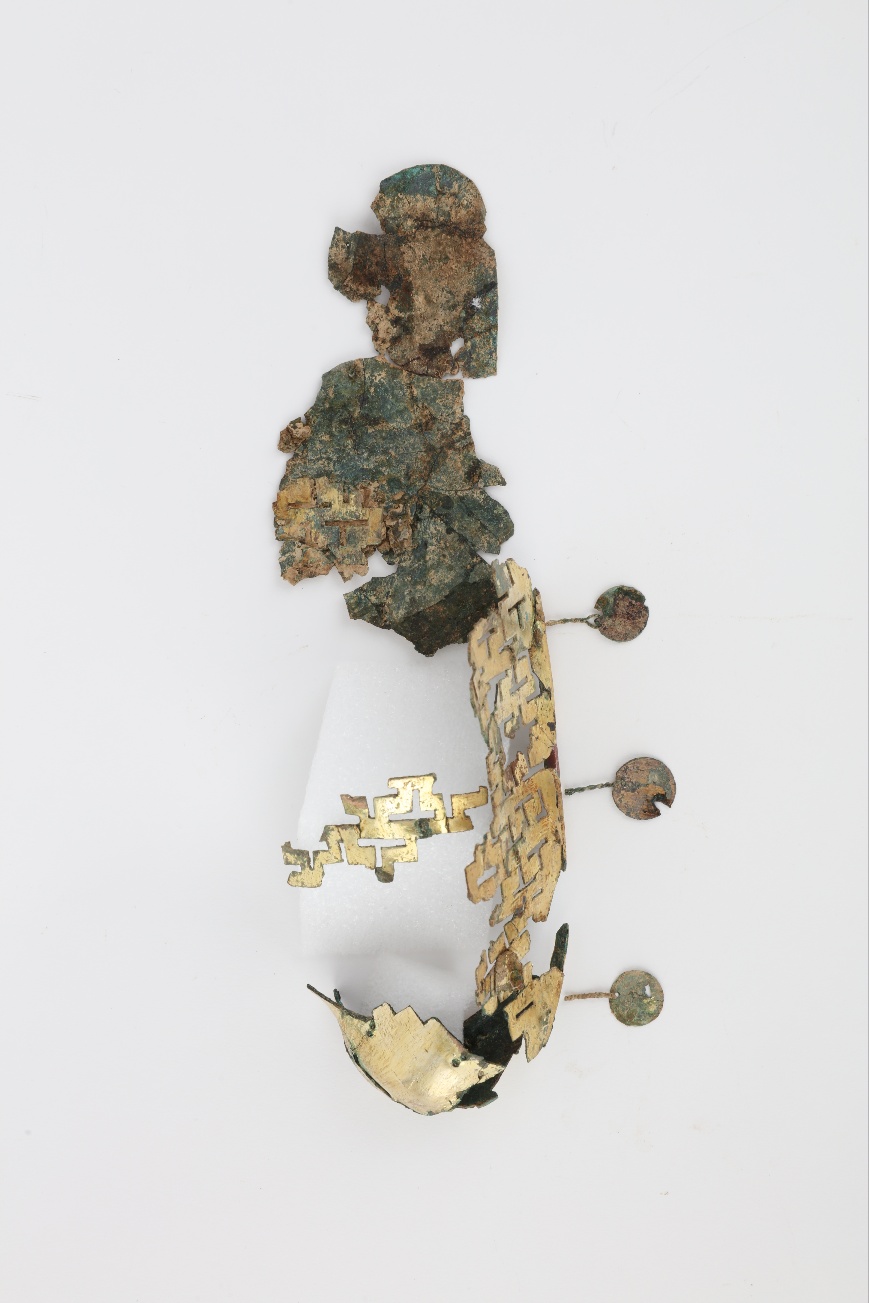

The GNRICH will hold a preview of the research result film at the Seorabeol Cultural Center (Gyeongjusi, Gyeongsangbukdo) on July 4th at 11:00 am and 3:00 pm.
Furthermore, restored artifacts will be exhibited, recreating the excavation scene as they were discovered from July 4th to July 12th at the Jjoksaem excavation hall.
At the excavation research result film preview hold on July 4th, attendees will have the opportunity to view actual artifacts and reproductions, as well as watch films related to excavation and convergence research.
Moreover, there will be a Q&A session with the person in charge of the excavation.
For those unable to attend in person, the event can also be watched in real time through the YouTube channel of the Cultural Heritage Administration.
YouTube Channel of the Cultural Heritage Administration: https://www. Youtube.com/chluvu
#Korean_archaeology #mudguard #jewel_beetle #Gyeongju #SillaKingdom
'NEWS & THESIS' 카테고리의 다른 글
| 을축년대홍수 100주년을 준비해야 하는 기관들 (0) | 2023.07.05 |
|---|---|
| 사진으로 보는 경주 쪽샘지구 44호분 발굴 (0) | 2023.07.04 |
| 비단벌레 말다래에서 머리다발까지, 경주 쪽샘 44호분이 토해낸 것들 (0) | 2023.07.04 |
| 남구만 만나러 용인시박물관 가자! (0) | 2023.07.04 |
| 후지츠카藤塚와 난학蘭學을 보충한다 (0) | 2023.07.03 |




댓글